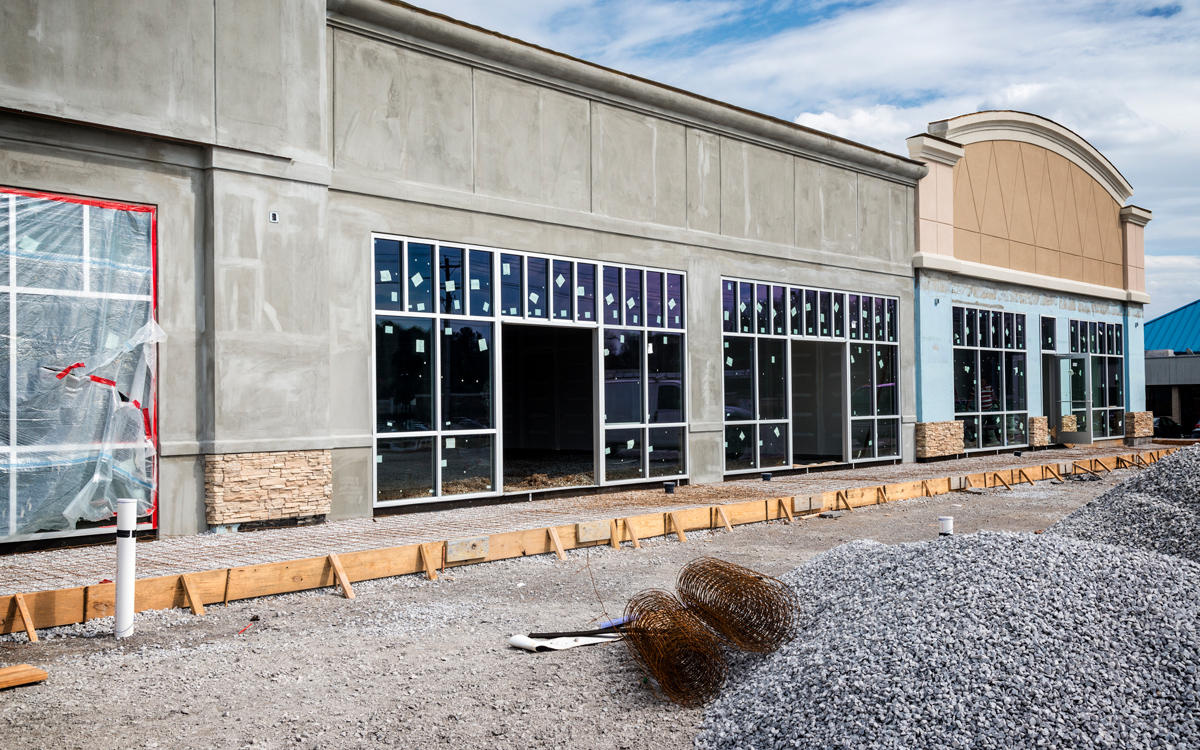Untangling the Chain
Posted on May 04, 2022

Creative ways to combat supply chain disruptions and maintain construction timelines
Whether the pandemic was the direct cause or was simply more fuel for an already smoldering fire of delays and logistical headaches, the reality is that supply chain disruptions are now a regular and unwelcome reality that builders, developers, retailers, and landlords all have to contend with.
Higher production costs, labor shortages, transportation delays, and an industry dynamic where demand vastly outstrips supply have created a situation where items that once might have taken a month to arrive are now delayed for 6 months or even a year in some cases. Supply chain disruptions are frustrating, but they can also be expensive, with costly and consequential delays that don’t just alter timelines but take a hefty bite out of bottom lines in the process.
Fortunately, there are things your construction partner can do to keep your project moving forward: proven best practices and creative strategies that can minimize supply-chain issues and complete projects on-time and on-budget.
Material differences
One of the most obvious ways to sidestep avoidable delays is to use alternative building materials, products, or finishes. That often means going with generic or standard options, and, fortunately, some subcontractors have taken steps to make those materials more available by renting additional storage space and stockpiling more materials. Construction professionals should be willing and able to accommodate clients with alternative options that are structurally and aesthetically similar.
Supply chain challenges are upending some of the usual calculus when it comes to material costs. Structural beams were traditionally more expensive than bar joists, for example, but with bar joists increasingly difficult to source in a timely manner, more projects are using beams instead of joists for new roof construction. Those kinds of substitutions might alter designs or require new engineering calculations, but if it saves you six months, it will likely be well worth it.
Lesson planning
Construction professionals should be prepared to educate their clients about different timelines, material options, and cost-benefit considerations. Not all clients are savvy and sophisticated construction experts and working with them to make sure they understand what’s involved and what’s at stake is an essential skill for any construction company in today’s environment. To their credit, more clients are becoming more flexible and are more willing to explore new material and design options. That newfound flexibility isn’t just with structural design features, but on more visible fits and finishes like drop ceiling panels or flooring options.
One step ahead
The reality is that alternative options aren’t always possible or practical. A large retailer that always utilizes a specific HVAC system, for example, is unlikely to want to shift gears when it means potentially retraining maintenance departments, rewriting standard protocols, and resourcing replacement parts. With that in mind, the best construction companies recognize that when compromise isn’t an option, foresight is a necessity. From the moment a project is approved, it’s imperative to start assessing timelines and priorities and sorting through procurement logistics to begin ordering key materials as soon as possible.
Change it up
In a perfect world, builders would be able to follow logical and established build orders every time. But the messy realities of an unpredictable supply chain mean that sometimes the best and only way to save time and money is to be creative (and practical) about checking items off the to-do list. Installing flooring at the end of a project might make the most sense, but if that’s something you can take care of while waiting for other materials to come in, it might make sense to do that—and then cover/protect the floor so future tasks can be completed. Experienced builders should constantly be making informed and strategic decisions about whether the potential logistical challenges of calling an audible and going with a nontraditional build order outweighs the projected time and cost savings.
Work with inspectors
Timely permits and inspections are another casualty of the times. Overwhelmed governments and regulatory bodies, along with supply chain delays, can lead to a chaotic and unpredictable inspection schedule. The best construction professionals understand and adjust to the different procedures and preferences of different counties and jurisdictions, and budget their time and resources accordingly. They also know how to avoid costly inspection delays caused by supply chain issues, doing things like custom fabricating an interim solution to secure temporary final approval so work can continue until the right parts are delivered. Because in the current climate, finding creative solutions to keep projects moving forward on time and on budget is the best way to avoid getting hung up in the tangled links of an increasingly unreliable supply chain.